Make sure to head over to 10000 Birds to read my post on the Greater White-fronted Geese at Colusa National Wildlife Refuge. The post includes a video of the geese frolicking around in the tules!
Falcated Duck (Anas falcata) Male photos by Larry Jordan
A vagrant Falcated Duck (Anas falcata), a bird you would normally see in Asia, was first spotted at Colusa National Wildlife Refuge on December 8th (click on photos for full sized images). Colusa National Wildlife Refuge is part of the Sacramento National Wildlife Refuge Complex located about 90 miles North of Sacramento, California’s state capitol.
Colusa National Wildlife Refuge is part of this complex of five national wildlife refuges (NWR) and three wildlife management areas (WMA) found in California’s central valley. It is located about 6 miles east of Interstate 5 on Highway 20. A map of the refuge can be found here showing the location of the viewing platform, auto loop, restrooms and photography blind.
Colusa National Wildlife Refuge occupies 4,567 acres, including seasonal marsh, permanent ponds, and uplands1. It includes a three mile auto loop, a one mile walking trail and a photography blind that you can reserve like I did this weekend 😉
I didn’t see this Near Threatened (NT) species from the photo blind though, it has been visible to everyone from the observation deck at the refuge entrance!
Birdlife International and the IUCN Redlist categorize the Falcated Duck as Near Threatened mainly because of its rapid decline in China due to over hunting2. You can read more about the status of this duck by clicking the link above.
This Falcated Duck drake has been seen in the constant company of a pair of American Wigeon near the observation platform almost daily since it was discovered. Notice I said almost daily. I missed seeing the bird in my first attempt a few weeks ago but I figured I had another shot at him this weekend since I had the blind reserved anyway.
It was lucky Friday the 13th for me when he showed up at about 2 o’clock in the afternoon and moved to within about fifty yards of the platform to the thrill of the birders in wait. He spent most of his time foraging with the American Wigeon pair but I caught this video of him as he bathed and preened.
As you can see, this drake is beautiful with his iridescent green and bronze head and the elongated, arched tertial feathers after which it is named.
Here is a sweet shot of him preening. A good time was had by all!
This post is linked to Bird Photography Weekly and will be linked to World Bird Wednesday on Tuesday morning. Please go check out both of these wonderful bird photography memes.
References: 1Sacramento National Wildlife Refuge, 2BirdLife International
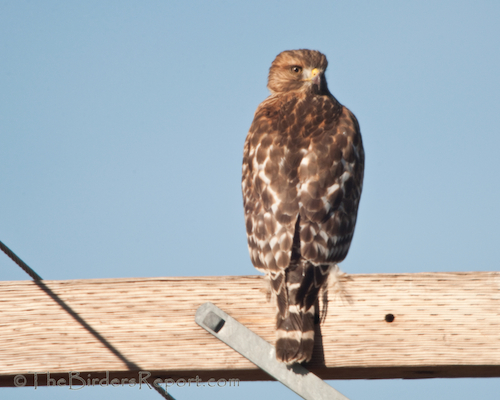 Red-shouldered Hawk (Buteo lineatus) photos by Larry Jordan
Red-shouldered Hawk (Buteo lineatus) photos by Larry Jordan
Red-shouldered Hawks (Buteo lineatus) seem to be doing very well in northern California. I see them nearly every day in several different locations (click on photos for full sized images). As I have said many times, these hawks are my favorite Buteo.
This beauty was seen in McArthur when I was on the hunt for the Common Redpoll (see previous post). As I left the road where the Western Screech-Owl was located, this juvenile Red-shouldered Hawk was seen atop a telephone pole looking for lunch. As it turned to take off of from the cross-member, I took this photo. You will notice its nictitating membrane is covering its eyes. This is an inner eyelid used to clean and moisten the cornea.
As the bird flew down from the pole, it pounced on something and was back up atop a pole on the other side of the road in an instant. If I had been thinking clearly, I would have gotten out my video camera to document the rodent lunch.
As it was, I didn’t even have time to adjust the settings on the camera for a faster exposure and got several blurry images of the hawk scarfing down what looked like a meadow vole. I chose the best one for this post.
It only took the hawk about 15 seconds to dispatch the vole, finishing it off in one big gulp. By pulling it from his talon and lunging down with his head, he engulfed the entire rodent and then took a big swallow.
The show was over. Time to clean up a bit. Check those talons for tidbits, scrape the beak and relax for a moment.
From the look of that pole, it is used fairly often, probably by this same bird.
I think this Red-shouldered Hawk is still hungry.
I did get a shot of him looking right at me but it wasn’t sharp. I love those photos of raptors looking directly at you. I call it the raptor’s stare. He took a second glance at me, then looked off, not considering me a threat after all this time.
Is it any wonder why this is my favorite Buteo? Just look at him or her, just finished lunch and ready to go!
For more great bird photos, you will definitely want to head over to World Bird Wednesday. If you haven’t already posted, come on and join the fun!
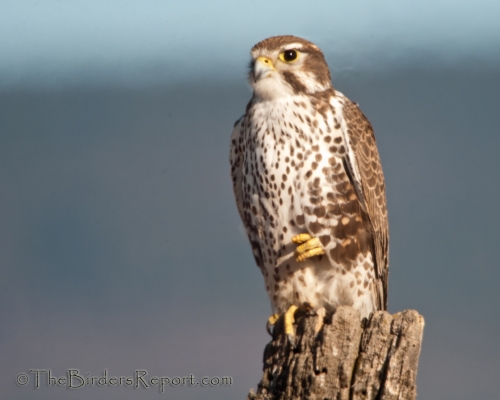 Prairie Falcon (Falco mexicanus) photos by Larry Jordan
Prairie Falcon (Falco mexicanus) photos by Larry Jordan
On our recent Fall River Christmas Bird Count on December 17th, we tallied 127 species in our count circle. Some finds were extraordinary, like the Long-tailed Duck, Common Redpoll, Red-naped Sapsucker and American Tree Sparrow.
Others like the Prairie Falcon (Falco mexicanus) are seen every winter in the Fall River/McArthur area. However, according to this range map, courtesy of Terry Sohl of South Dakota Birds, I should look for Prairie Falcons there in the early spring when they begin nesting. Click on photos for full sized images.
The Prairie Falcon inhabits dry environments of western North America where cliffs or bluffs punctuate open plains and shrub-steppe deserts. An efficient and specialized predator of medium-sized desert mammals and birds, the Prairie Falcon ranges widely, searching large areas for patchily distributed prey1.
Several species of ground squirrels are the mainstay of the Prairie Falcon’s diet; they provide fat-rich calories that the Prairie Falcon needs for raising its broods of 4–5 young during its 3 to 4 month nesting season. When ground squirrels move underground to escape summer heat and dryness, Prairie Falcons leave their nesting areas in search of other prey. Horned Larks and Western Meadowlarks are important prey items in winter1.
Having missed the opportunity to see the rare Common Redpoll (rare for our neck of the woods or savannahs that is) I headed back up to McArthur to try to see the Redpoll about a week after the CBC. I dipped on the Common Redpoll but got these photos of the Prairie Falcon for my efforts.
A second trip to the Fall River area a couple weeks later yielded the Common Redpoll, American Tree Sparrow and the Western Screech-Owl seen in the previous post. I was never able to catch up with the Red-naped Sapsucker but getting close-up views of the Prairie Falcon was enough to make this birder happy!
If you want to see some really incredible photos of the Prairie Falcon, check out my friend Mia McPherson’s post. Now those are some gorgeous shots! To see more great bird photos from around the world, check out World Bird Wednesday!
References: 1Birds Of North America Online

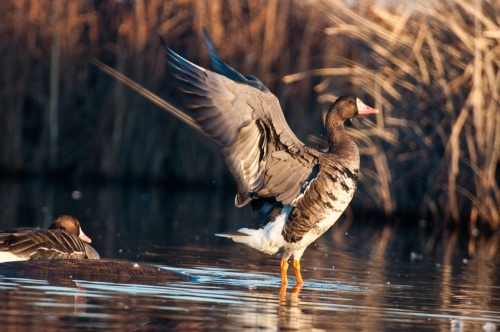
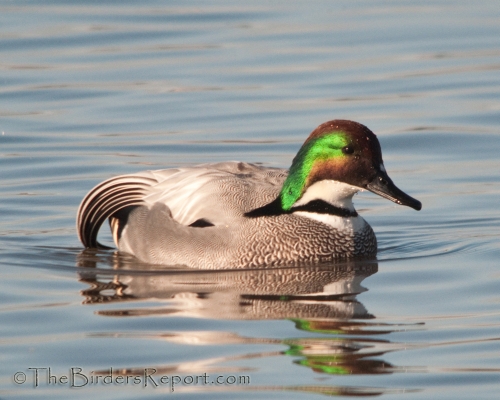
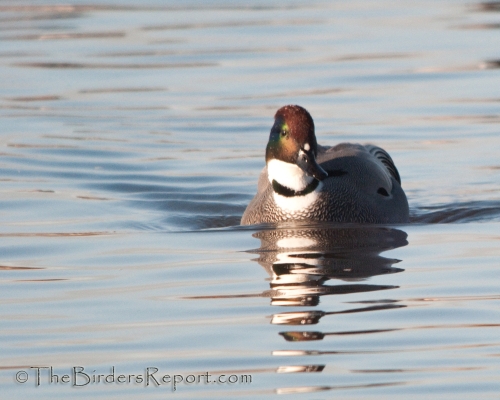
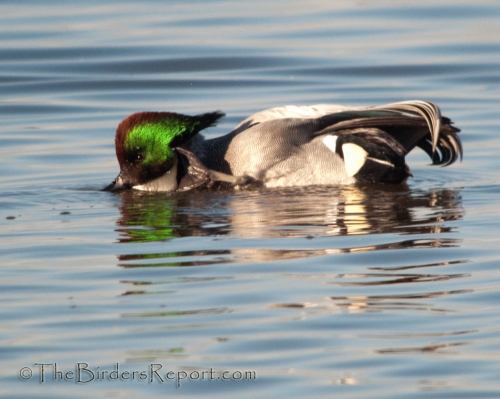
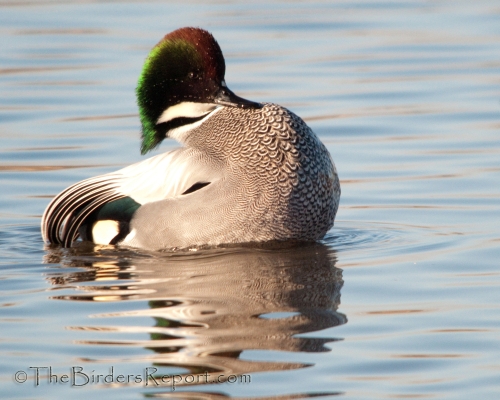
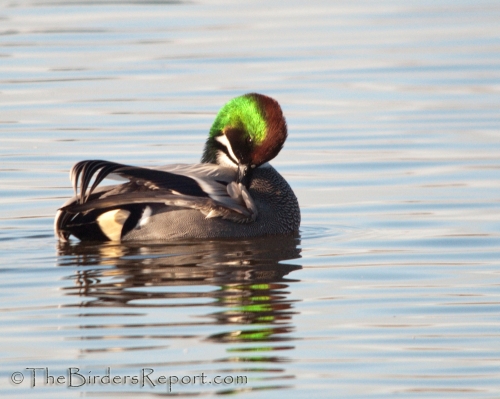
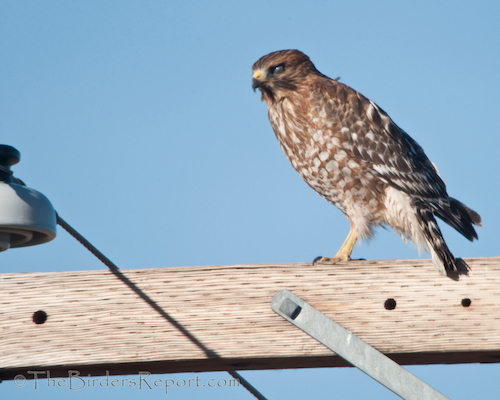
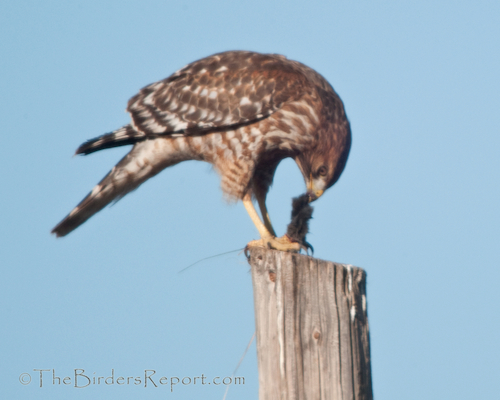
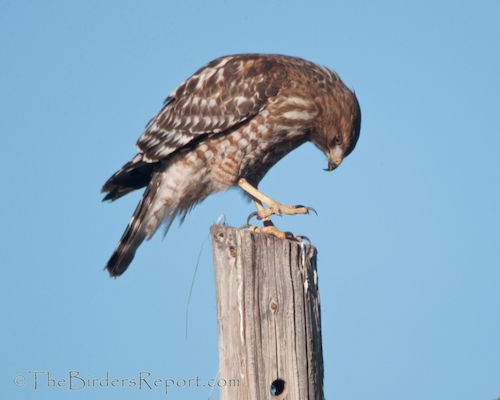
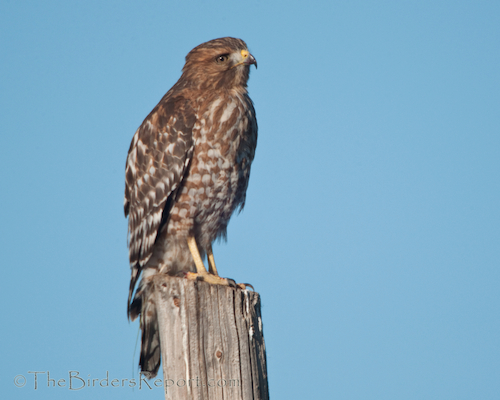
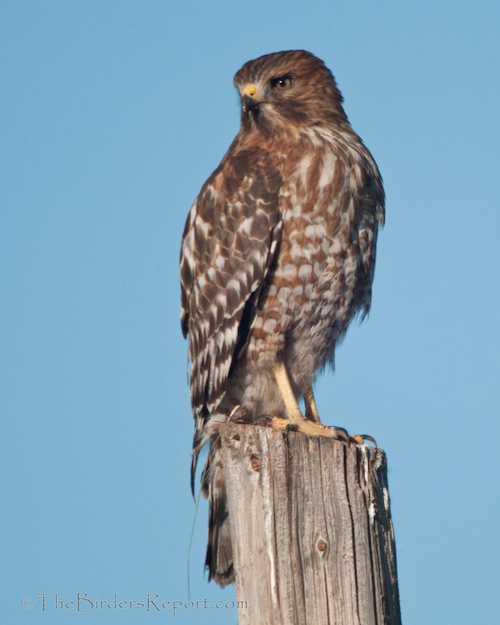
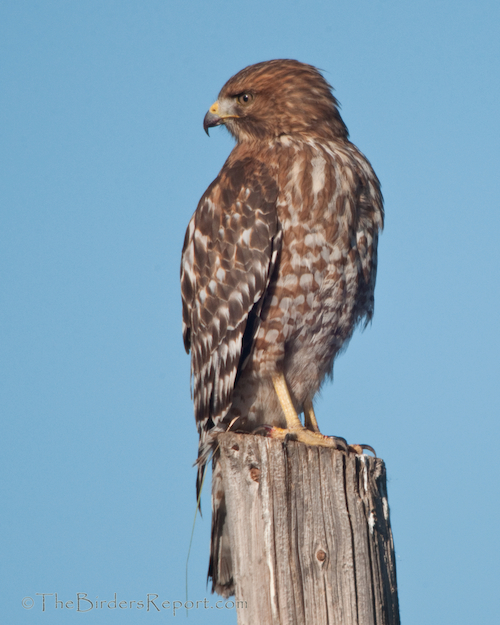
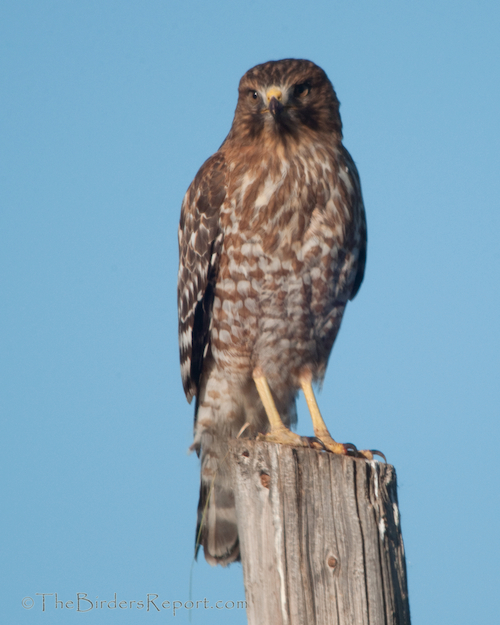
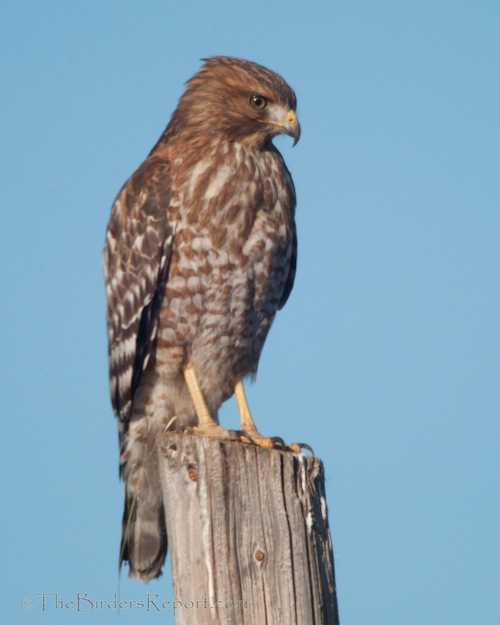
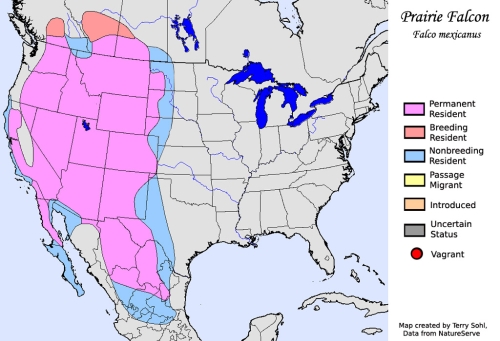
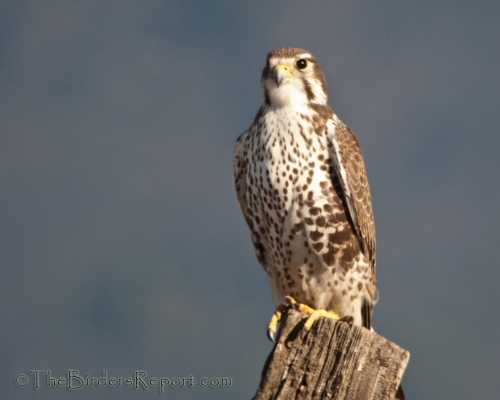
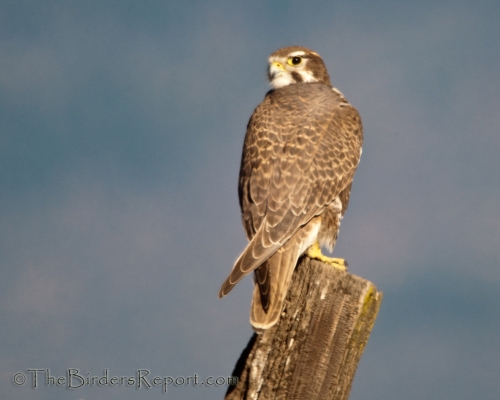
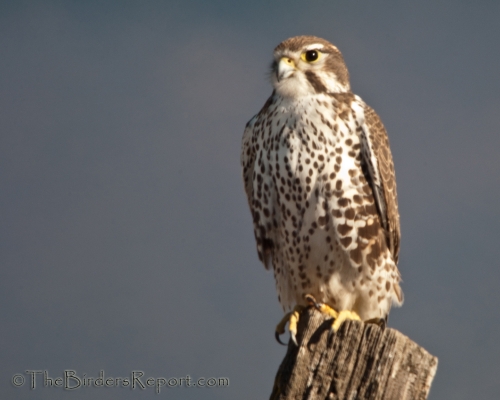
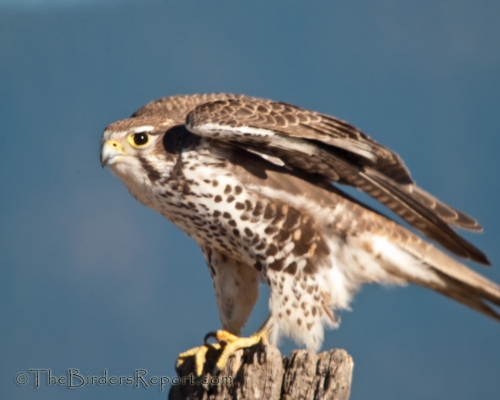



Social Media Connect